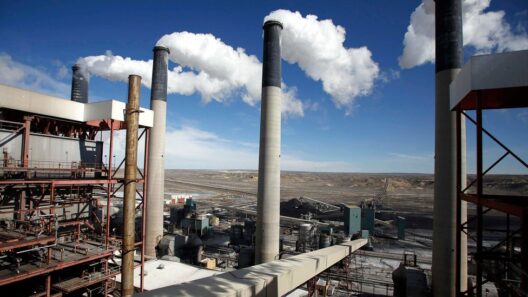The sun, a blazing sphere of energy, is often considered the epitome of sustainable power, illuminating the way toward a greener future. However, amid this radiance, a shadow lurks: the question of whether solar energy, despite its pristine image, inadvertently contributes to global warming. This paradox invites a deeper examination of the photovoltaic revolution that has swept across the globe, challenging preconceptions held by many environmental advocates.
As the world grapples with the dire consequences of climate change, renewables such as solar energy have ascended to the forefront of energy discussions. The predominant narrative embraces solar power as a savior, a beacon of hope in the fight against fossil fuel dependence and carbon emissions. Yet, like Icarus soaring too close to the sun, we must delve deeper to understand the implications of our reliance on this promising technology.
Solar energy harnesses the sun’s rays through photovoltaic cells, converting light into electricity. This process emits negligible greenhouse gases compared to traditional energy sources. Nevertheless, the entire lifecycle of solar panels raises questions regarding their environmental impact. Manufacturing these solar cells involves significant industrial activity, often characterized by high energy consumption and emissions, particularly when fossil fuels dominate the energy mix of producing nations.
The production process of solar panels is intricate, encompassing the extraction, refining, and processing of raw materials such as silicon, silver, and aluminum. Mining for these resources can lead to habitat destruction, water pollution, and substantial energy use, thus creating an ecological footprint that belies the final product’s sustainability claims. This raises the pertinent issue: Can solar energy be termed “clean” if its production inflicts such costs upon the environment?
Furthermore, the lifecycle of solar panels extends beyond their creation; it encompasses their utilization and eventual disposal. Solar installations can last twenty to thirty years, during which they mitigate greenhouse gas emissions. However, the end-of-life phase presents another conundrum. The recycling processes for solar panels are still nascent, leading to concerns about waste management solutions that hinge on toxic materials. If not properly addressed, this can lead to a different kind of environmental degradation, undermining the very benefits solar energy purports to provide.
To ponder whether solar energy contributes to global warming is to consider the full spectrum of possibilities—like viewing a grand tapestry from both the front and back. One must also assess the potential for advancements in technology to render solar power more sustainable. Innovations in material science and manufacturing processes are evolving steadily, aiming to reduce the ecological impacts associated with solar panel production. For instance, emerging techniques focus on utilizing less energy-intensive materials and incorporating recycled components into new installations.
Moreover, transitioning to a circular economy, where products are designed for longevity, reuse, and recyclability, could augment solar power’s sustainability profile. If manufacturers prioritize eco-friendly processes, the renewable energy transition can become a truly virtuous cycle that supports both energy needs and environmental integrity.
Exploring the energy mix used in solar panel production is also critical. Countries dependent on coal or other fossil fuels not only exacerbate emissions during the manufacturing process but also compound the issue when energy sources used in manufacturing affect the overall carbon footprint of solar technology. On the flip side, nations harnessing hydro or wind energy for panel production minimize additional carbon contributions—exemplifying how geography and energy policies shape the environmental impacts of solar energy.
Yet, in contrasting the production dynamics of solar panels with those of conventional energy sources, a stark realization surfaces. Even accounting for production emissions, solar energy still offers a significant reduction in overall greenhouse gas outputs compared to coal or natural gas power generation. The operational emissions—those released during their use—remain minuscule in comparison, painting solar in a more favorable light in the battle against climate change.
As we engage in discourse about solar energy and its dichotomous nature, one must also consider the socio-political dimensions. Programs and policies that promote solar energy deployment without stringent environmental safeguards can inadvertently lead to adverse effects. When expansions are executed with insufficient oversight, they may precipitate habitat loss or contribute to inequality in energy access—an issue glossed over when solar energy is hailed as the universal solution to climate dilemmas.
In conclusion, while solar energy dares to shine the light of hope in a dimming world, it also casts an intricate shadow. A thorough understanding of its lifecycle, production processes, and socio-economic implications is essential. It is imperative to engage in this conversation holistically, acknowledging that solar energy’s potential to combat climate change is undeniable—but it must be pursued responsibly. As innovators continue to enhance the sustainability profile of solar technology, we must remain vigilant, advocating for practices that ensure the only shadow solar energy casts is one of progress, not that of environmental degradation.







